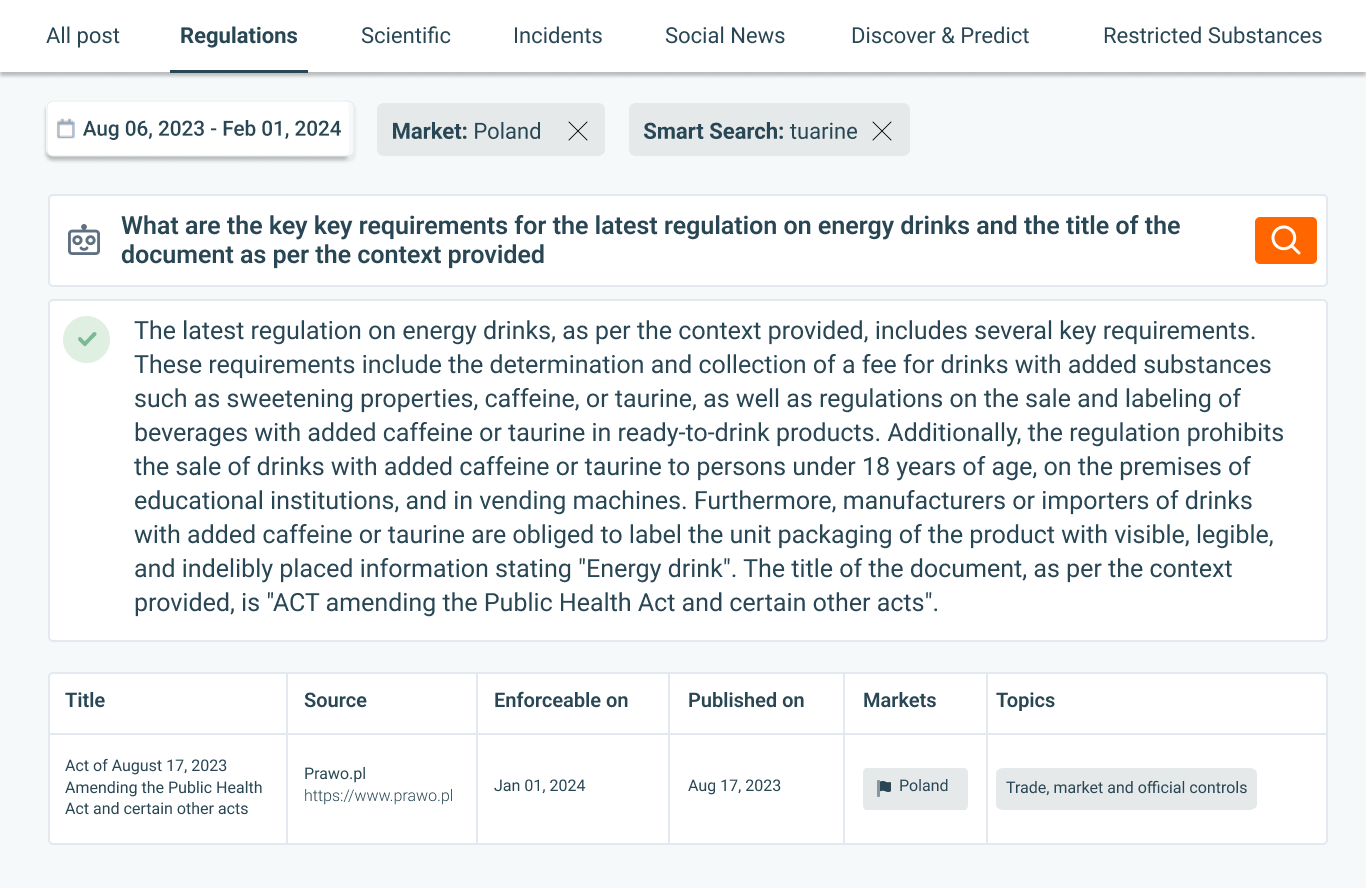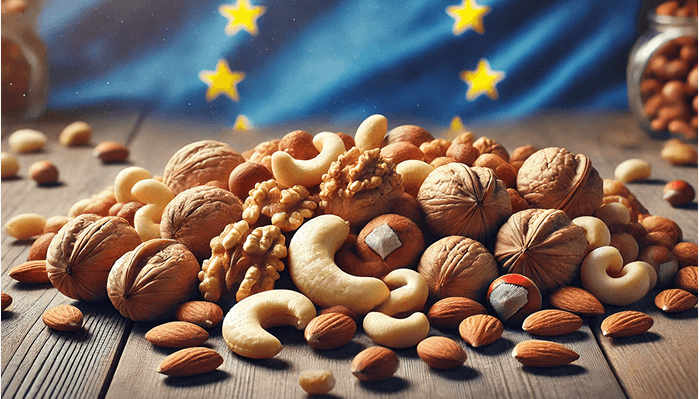Nickel contamination in food has long been a concern, but with EU Regulation 2024/1987, the European Commission is setting strict maximum levels for nickel in various foodstuffs. The regulation, which amends Regulation (EU) 2023/915, is designed to protect public health by reducing nickel exposure, especially for sensitive populations like toddlers and nickel-sensitized individuals.
Starting July 1, 2025, food business operators will need to ensure compliance with these new limits. While the regulation provides a transition period, its implications for producers, importers, and retailers are significant. Understanding how nickel enters the food chain, which foods are most affected, and how the industry is expected to respond is crucial for compliance.
Why Is Nickel in Food a Concern?
Nickel is a naturally occurring metal found in soil, water, and air. However, its concentration in food is influenced by both natural sources and industrial activities. While small amounts of nickel are not harmful, excessive exposure can cause chronic toxicity, allergic reactions, and reproductive health issues.
According to EFSA’s 2020 risk assessment, chronic exposure to nickel may lead to:
- Pregnancy loss and reproductive toxicity (high risk for women).
- Neurotoxic effects in young children.
- Eczematous flare-ups in nickel-sensitive individuals (affecting ~15% of the population).
The assessment concluded that the tolerable daily intake (TDI) of nickel should be 13 μg/kg body weight, and many food products currently exceed this level—raising health concerns across Europe.
Key Provisions of EU Regulation 2024/1987

1. Enforceable Date and Transition Period
- The regulation takes effect on July 1, 2025.
- Products already on the market before this date can remain until their expiration date, allowing food businesses time to adjust formulations and sourcing practices.
2. Maximum Nickel Limits in Food
The regulation establishes strict limits on nickel concentrations in various food categories, including:
|
Food Category |
Maximum Nickel Level (mg/kg) |
|---|---|
|
Tree nuts (except certain varieties) |
3.5 |
|
Chestnuts, pine nuts, walnuts, Brazil nuts, cashews |
10 |
|
Root and tuber vegetables |
0.90 |
|
Fruiting vegetables |
0.40 |
|
Brassica vegetables |
0.50 |
|
Leafy vegetables |
0.50 – 1.2 (for fresh herbs) |
|
Legume vegetables |
1.0 – 6.0 (for soybeans/edamame) |
|
Seaweed |
30 – 40 (for wakame) |
|
Pulses |
4.0 – 12 (for dry beans and lupins) |
|
Oilseeds (sunflower, peanuts, soybeans) |
8.0 – 15 |
|
Cereals |
0.80 – 5.0 (for oats) |
|
Cocoa powder |
15 |
|
Infant formula and baby food |
0.10 – 0.50 |
These limits target high-risk foods, as research shows tree nuts, soy products, and cereals tend to accumulate higher nickel levels.
How Nickel Enters the Food Supply Chain
Nickel contamination in food can come from multiple sources:
-
Soil and Water Absorption
- Crops like leafy vegetables, nuts, and grains naturally absorb nickel from soil and irrigation water.
- High-nickel regions may produce foods exceeding safety limits.
-
Industrial Contamination
- Nickel pollution from metal refineries, mining, and manufacturing plants can enter the food chain through water contamination.
- Airborne nickel particles settle on crops, increasing their levels.
-
Food Processing Equipment
- Nickel-containing stainless steel is commonly used in food processing.
- Certain acidic foods (e.g., tomatoes, citrus-based products) leach nickel from machinery, increasing concentrations.
-
Pesticide and Fertilizer Residues
- Some fertilizers contain trace amounts of nickel, which can accumulate in food over time.
Implications for the Food Industry
For Producers
- Sourcing ingredients from low-nickel regions will become a priority.
- Soil and water testing will be required for crops that naturally accumulate nickel.
- Reformulation efforts may be needed for processed foods with high-nickel ingredients.
For Importers & Exporters
- Nickel limits may create new trade barriers, particularly for countries exporting tree nuts, grains, and cocoa products to the EU.
- Product testing and certification will become necessary to meet compliance requirements.
For Retailers & Consumers
- Consumers may see labeling changes indicating compliance with nickel limits.
- Nickel-sensitive individuals may find more low-nickel options as manufacturers reformulate products.
How to Ensure Compliance
With EU Regulation 2024/1987 set to take effect in July 2025, food business operators must act now to avoid disruptions. Compliance is not just about meeting regulatory standards—it’s about ensuring consumer safety and maintaining trust.
The first step is understanding where nickel contamination occurs in your supply chain. Ingredients like nuts, grains, and leafy vegetables tend to accumulate high levels of nickel, and food processing methods can further increase exposure. Regular testing of raw materials and adjustments in food formulation will be necessary to stay within the new legal limits.
Equally important is supply chain transparency. Working with certified suppliers who adhere to strict safety controls will help ensure compliance. Additionally, food manufacturers must evaluate their processing equipment, as nickel-containing stainless steel can leach metal into acidic foods, increasing contamination risks.
Staying ahead of regulatory changes is another key factor. SGS Digicomply’s Regulatory Intelligence Hub provides a comprehensive solution for tracking evolving regulations across 150+ jurisdictions. With AI-powered research tools, real-time monitoring, and regulatory change alerts, food businesses can make informed decisions and adapt quickly. Whether it’s comparing global standards or assessing risk, SGS Digicomply helps companies navigate compliance with ease.
🔗 See how it works: SGS Digicomply Regulatory Intelligence Hub

Conclusion
EU Regulation 2024/1987 introduces a major shift in contaminant control, ensuring that food business operators take active measures to reduce nickel exposure. With maximum limits set to take effect in July 2025, industry players must act now to meet compliance requirements.
The regulation is not just about compliance—it’s about protecting public health, particularly for toddlers, children, and nickel-sensitive individuals. For food producers, the challenge lies in adjusting sourcing, testing, and processing methods to align with these new regulatory standards.
The question remains: Is the food industry ready for the nickel crackdown?





.webp?width=1644&height=1254&name=Food%20Safety%20Dashboard%201%20(1).webp)
